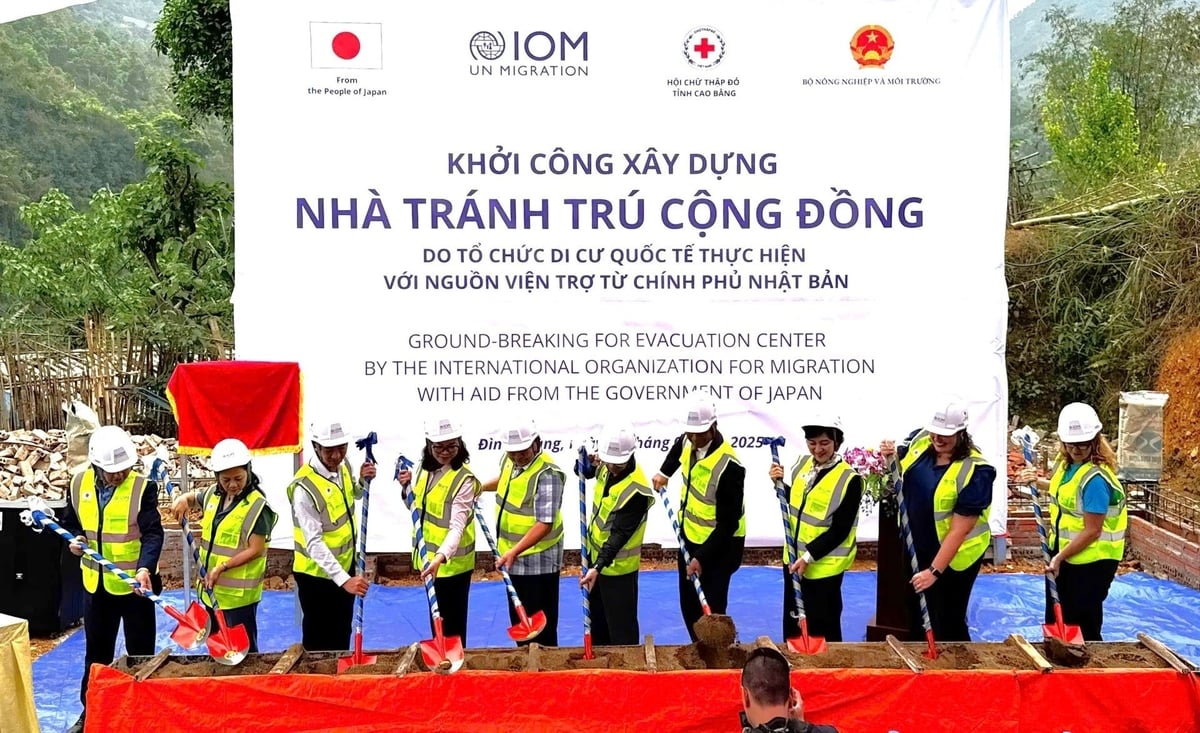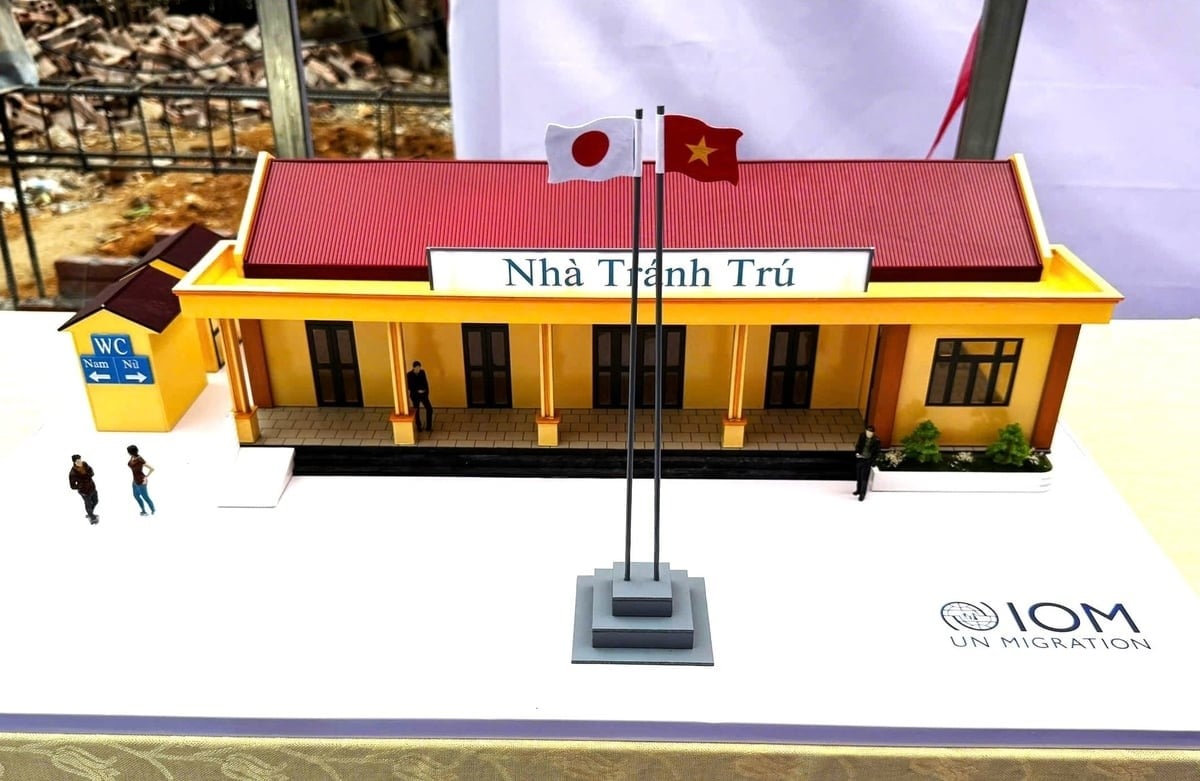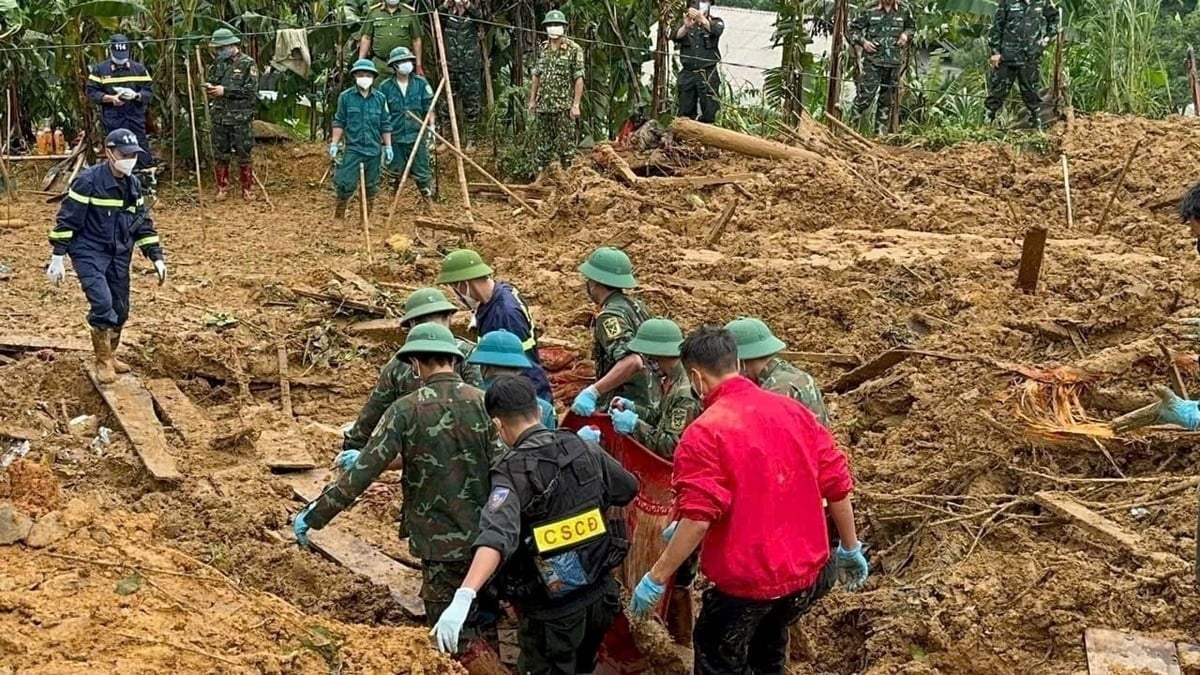November 27, 2025 | 12:58 GMT +7
November 27, 2025 | 12:58 GMT +7
Hotline: 0913.378.918
November 27, 2025 | 12:58 GMT +7
Hotline: 0913.378.918

Groundbreaking ceremony for evacuation center in Choi village, Dinh Phung commune, Bao Lac district, Cao Bang province. Photo: Department of Dyke Management and Natural Disaster Prevention and Control.
On April 9, with aid from the Government of Japan, the International Organization for Migration (IOM) and the Ministry of Agriculture and Environment organized the groundbreaking ceremony for evacuation center in Choi village, Dinh Phung commune, Bao Lac district, Cao Bang province.
Attending the groundbreaking ceremony were Mr. Naoki Ito, Ambassador Extraordinary and Plenipotentiary of Japan to Vietnam, and his wife; Ms. Kendra Rinas, Chief of Mission for IOM in Vietnam; Ms. Silvia Danailov, Country Representative of the United Nations Children's Fund (UNICEF); and Mr. Nguyen Truong Son, Deputy Director of the Vietnam Disaster and Dyke Management Authority (VDDMA).
Mr. Nguyen Truong Son said that Vietnam is one of the countries most heavily influenced by natural disasters and climate change in the world. Every year, Vietnam faces dozens of natural disasters such as storms, floods, droughts, landslides, etc., causing great damage to people and property and seriously affecting the sustainable development of the country, esp›ecially in remote areas and ethnic minority areas.

Delegates and local people. Photo: VDDMA.
Being fully aware of that, the Government of Vietnam has been implementing many specific strategies, action programs, and projects to enhance its capacity to respond to natural disasters and adapt to climate change. One of the important orientations is to develop sustainable infrastructure for natural disaster prevention and control, based on the community and towards the most vulnerable group, including women, children, the elderly, and people with disabilities.
"The evacuation center in Dinh Phung commune is specific evidence for that orientation. The work is not only a safe shelter for people in the rainy and stormy season but also a community living space, contributing to raising awareness, enhancing cohesion and sharing, and preserving and promoting cultural identities while improving the local people's ability to respond to disasters," Mr. Nguyen Truong Son emphasized.

Model of evacuation center. Photo: VDDMA.
Accordingly, highly appreciating the international support model that is implemented methodically and effectively with the motto of taking people as the center, Mr. Nguyen Truong Son expressed hope that the model will be replicated in many other localities in the coming time.
Also in Cao Bang, the delegation of the Japanese Ambassador to Vietnam, UNICEF, and IMO delegation visited Kim Cuc commune. This locality is classified as a particularly difficult area, where Typhoon Yagi in 2024 had heavy impacts on the people's lives.
The delegation also witnessed the results of many efforts by UNICEF to improve access to clean water, hygiene, child protection, and psychological support for women and children. At local schools, the delegation engaged in various traditional games with elementary school students.

Cao Bang suffered heavy damage caused by Typhoon Yagi. Photo: Nguyen Lien.
Earlier, on the afternoon of April 8, the delegation worked with the Cao Bang Provincial People's Committee and the Ministry of Agriculture and Environment on the support of overcoming damage caused by natural disasters in the locality. Accordingly, Cao Bang province has received aid to overcome the consequences of Typhoon Yagi with a total value of more than USD 326,000 in goods and over USD 2.1 million in cash from countries and international organizations, including IOM and UNICEF.
In particular, with aid from the Government of Japan, IOM allocated 1,100 boxes of goods (equivalent to VND 1.7 billion) to nearly 5,000 people in 8 communes and built an evacuation center in Choi village, Dinh Phung commune (equivalent to VND 1.55 billion). It is expected that this work will be completed in May 2025, thereby ensuring a safe shelter for 150 people.
According to statistics, Typhoon Yagi is one of the storms with the greatest destruction in the past 70 years, causing heavy damage in the Northern mountainous provinces. Particularly in Cao Bang, the storm killed 55 people, destroyed approximately 2,000 houses, and made more than 1,000 households fall into a state of no residence.
The evacuation center is part of the International Emergency Aid to overcome the consequences of natural disasters in some Northern provinces that were seriously damaged by Typhoon Yagi and floods. This work is implemented by the International Organization for Migration in collaboration with the Vietnam Disaster and Dyke Management Authority (Ministry of Agriculture and Environment), with aid from the Government of Japan.
* USD 1 = VND 25,580 (Exchange rate updated on April 10, 2025; Source: Vietcombank)
Translated by Thu Huyen
/2025/11/26/4909-2-154329_878.jpg)
(VAN) Pearl grouper farming in HDPE cages not only delivers economic efficiency but also contributes to protecting the environment, creating jobs, and promoting marine-based experiential tourism.

(VAN) The model of making a living under the forest canopy through the agroforestry system in Van Son commune, Bac Ninh province, is expected to generate an annual income of approximately VND 30 million/ha.

(VAN) Many enterprises in Can Tho are harnessing natural energy and reducing greenhouse gas emissions in their production processes, thereby contributing to the promotion of a sustainable green transition.
/2025/11/24/3536-2-112800_176.jpg)
(VAN) Dong Nai now has tens of thousands of hectares of forests certified for sustainable management, and this area will continue to be expanded in the coming period.

(VAN) Vinh Ha hamlet (Dai Xuyen commune, Hanoi) is shifting away from small-scale farming as households adopt bioscurity into their breeder chicken models.

(VAN) Heavy rains make aquatic species more vulnerable to disease. Proactive water management and high-tech systems help farmers prevent outbreaks and protect yields.

(VAN) Greenhouses are shifting production mindsets in Binh Lu commune, enabling farmers to ‘weather the sun and rain’ and secure stable vegetable harvests throughout the year.